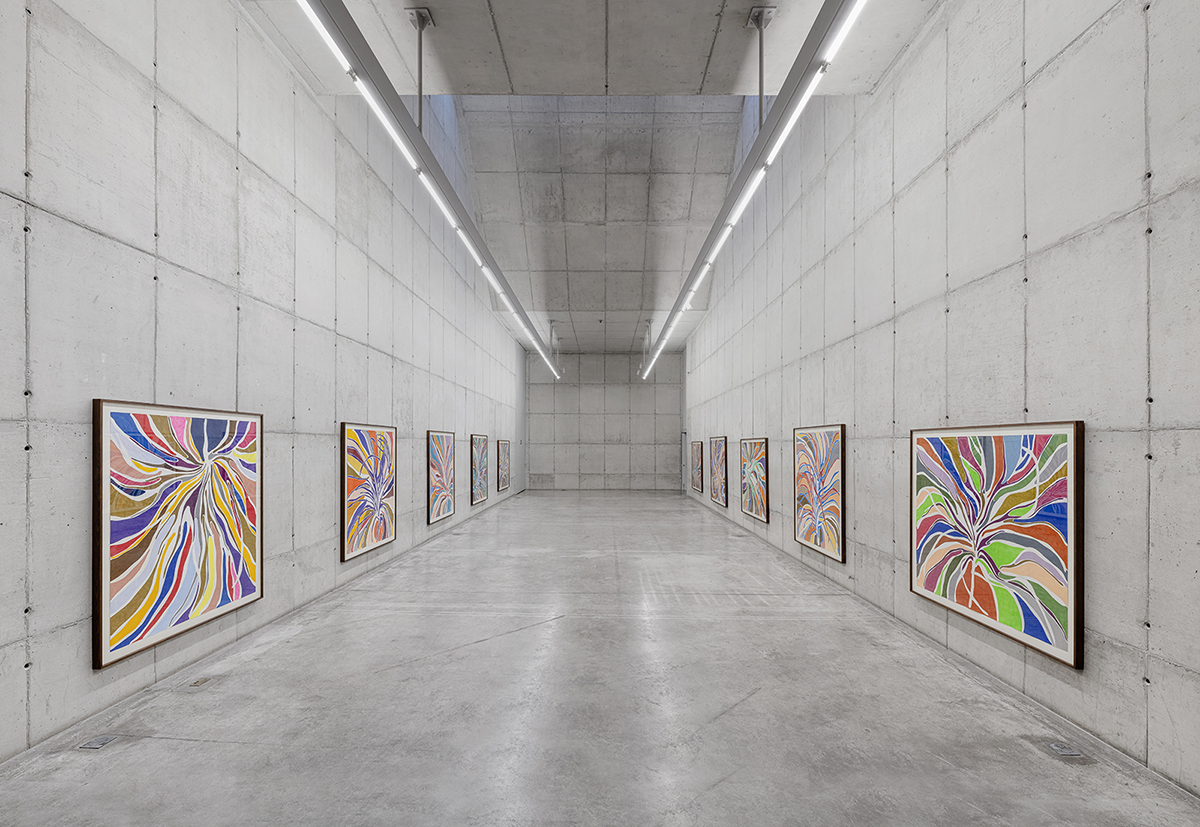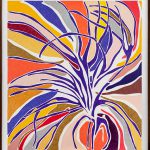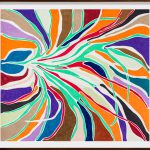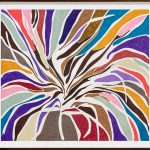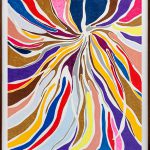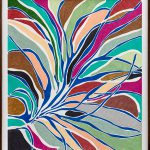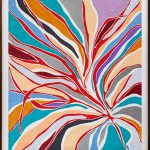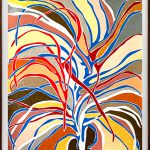Critical Essay: Ana Carolina Ralston
Chromatic rivers run and intertwine in a continuous, pulsating flow through the paper. Its contained circulation takes place between empty grooves that draw shapes bordering on abstraction – or is it figuration? – and they start from a cellular nucleus, the core of thought, which flows through the composition in a dynamic and constant current. The drawing occurs where the color is absent and from it, it overflows. The scene above guides the exhibition Matriz, by Marcia de Moraes, on view at Galeria Leme, which inaugurates the artist’s sequential thinking about human nature, uniting body, mind and its surroundings, without the precision of when one begins and the other ends.
It was from a single image that the different scenes shown in this exhibition were developed, as if this episode could be seen from distinct angles, approaches and aspects, to be completely decoded, obsessively and exhaustively analyzed, until it can, at last, be fully unveiled and totally transformed into what stands in front of us. If, at first, the gloomy vegetable image was consciously noticed by Marcia de Moraes, this perception quickly turns to the unconscious field, being accessed in multiple ways by the artist. With each crack opened, this memory changes and is analyzed by another unprecedented aspect. Thus, the matrix allows its many facets to be produced simultaneously by the artist’s pencil, who was surrounded by them in her studio for weeks, just as we are now at Galeria Leme.
As the veins that we detect in each work are born, also stand out phallic organic forms, which penetrate the void created by the graphite. The sinuous movement of those lines reminds us of the abstract-figuratives shapes created by Georgia O’Keeffe (1887-1986). The flowering of the flora that so inspired the American modernist artist takes us to the nature that the body of the human being carries itself, inducing our gaze to the erotic content that it also offers us. Vaginal petals reveal themselves in front of the viewer, as well as in the liquid layers that Marcia de Moraes creates and that follow the path of the feminist sensuality produced by her line.
The coloured tentacles are distributed by Marcia de Moraes’s glossary and lead us to other female references in Art History, such as the animalistic beings by Maria Martins (1894-1973), who seek through such members the connection with her own liberty. These segments created by Marcia de Moraes play the role in an anthropophagic way at this moment, as they were swallowing and giving back to the public something with another meaning. From the restless pieces proposed by her in previous works, a production full of continuous movement arrives at the exhibition, which, despite being chromatically explosive, generates calm. Perhaps this is how the artist’s production is defined, by the contradiction that swings as a pendulum between complementary-opposites. For many faces that, because they are so different, allow you to configure a unique image from where they came, which is their own matrix.
